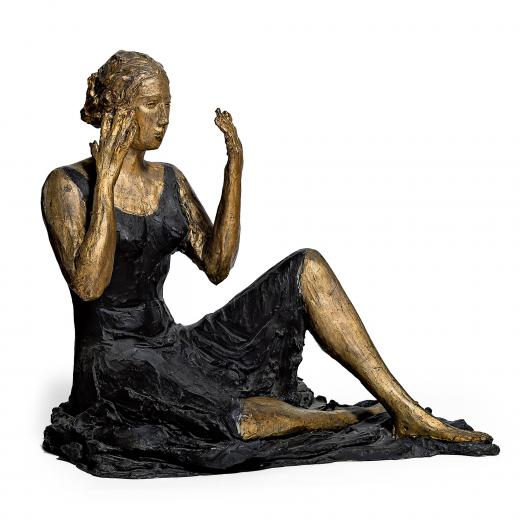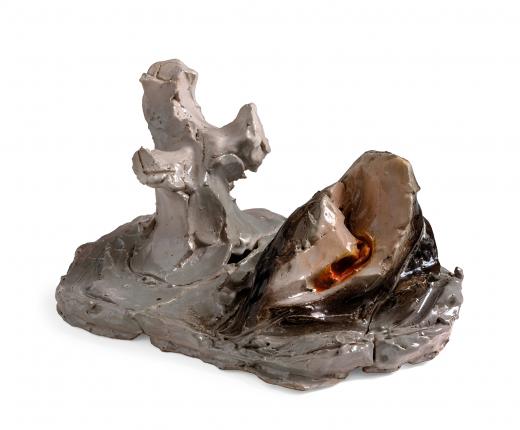EARLY SCULPTURE
Originally trained as a sculptor, Fontana developed his practice between Argentina and Italy, and this transatlantic experience defined his vision. Lucio Fontana began his artistic career as a sculptor in Rosario, Argentina, in the mid-1920s while working for his father’s business. Fontana y Scarabelli produced tomb sculptures for the local cemeteries of this city populated with Italian immigrants. The aspiring artist then moved to Milan to receive classical sculpture training at the Brera Academy of Fine Arts. Showing early signs of anti-academicism, Fontana preferred modeling to carving and during the 1930s, materials such as plaster, terracotta, or ceramics defined his practice. His style favored a figurative, realist stance inspired by ancient Etruscan sarcophagi—as exemplified in his female portraits, some of which are painted with color or gold. Simultaneously, Fontana absorbed contemporary influences like that of Futurism, a dominant movement under the Italian Fascist regime. His work unified genres, themes, and historical references, while challenging the accepted codes of sculptural practice.


